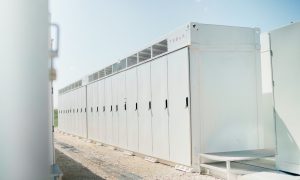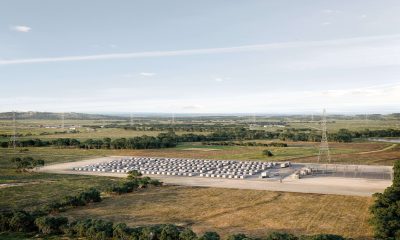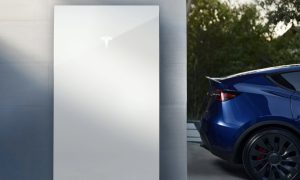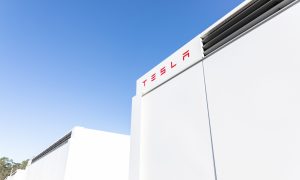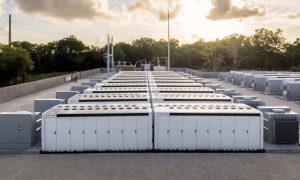Energy
UK energy storage startup takes on Tesla Powerwall 2 in home battery market
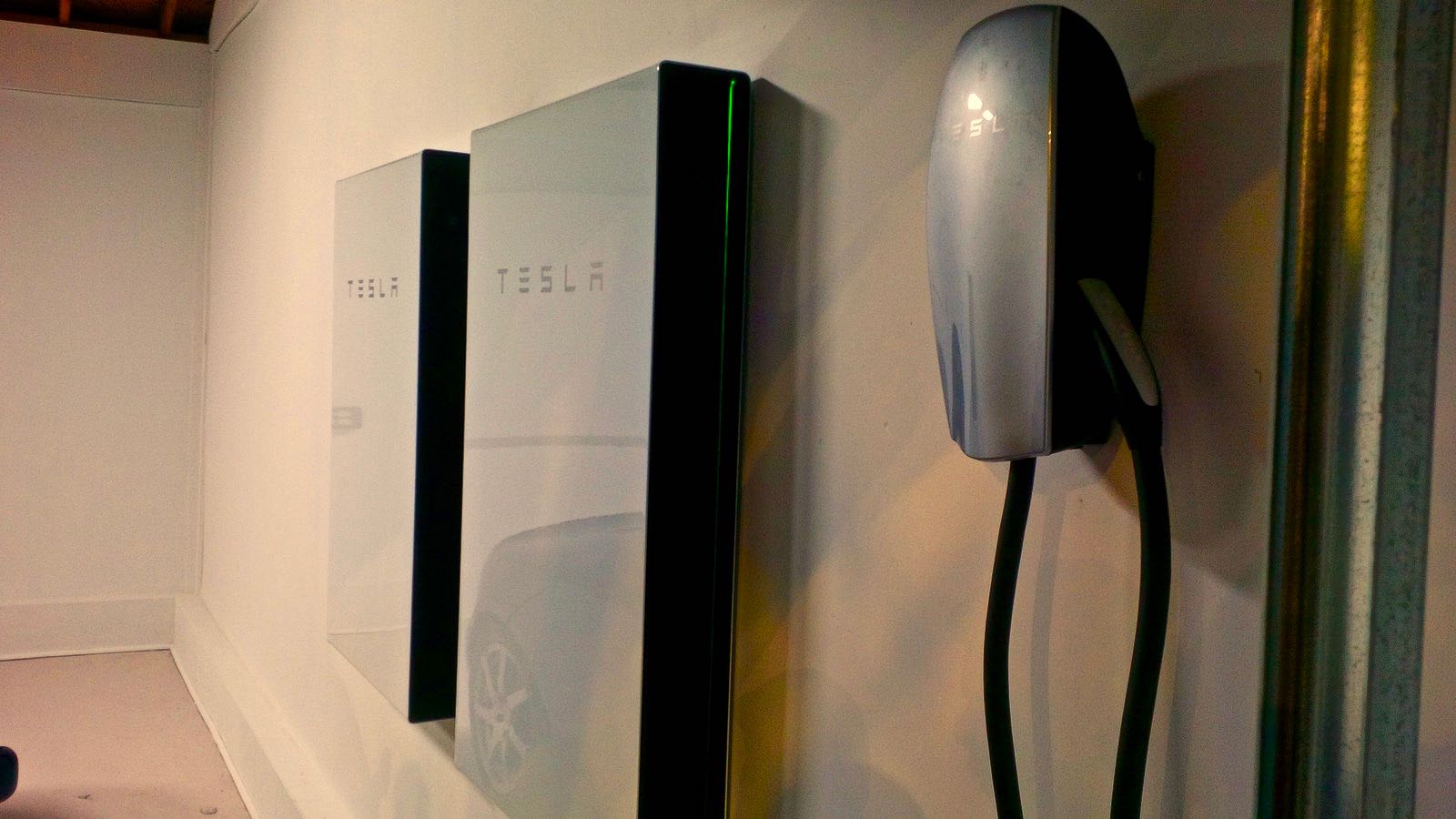
Tesla, Inc.’s CEO Elon Musk has made his company’s mission to help the world to transition away from reliance on fossil fuels and toward the embrace of sustainable energy sources. Now a U.K. energy-storage startup called Powervault is now in competition with Tesla, Inc. to outfit homes with affordable backup battery power across the pond.
Why is solar power and storage the key to the world’s energy independence?
Solar photovoltaic (PV) power generation is at the heart of a transformation that will revolutionize the world’s electricity systems, letting consumers produce power for their own needs and feed surplus energy into the grid. Solar power is becoming ubiquitous: from large-scale utilities to micro-grids; from billion-dollar corporate HQs to rural rooftops; and from urban sprawl areas to small islands and isolated communities. We see solar next to airports, along highways, in fields, powering road signs, even at local small businesses like breweries.
- Brewing company integrates Tesla Powerpack and solar with beer-making
- North Carolina creates state’s first microgrid laboratory, using Tesla Powerpacks
Energy storage is an essential link needed to make intermittent solar energy reliable. Batteries installed inside homes can store excess energy produced by panels during peak hours of operation. When combined with smart meters and digital technologies, batteries can help utilities regulate the grid by providing power reserves which can be tapped and transmitted on demand.
As prices have dropped, solar PV generation uptake by households and local communities has increased dramatically. In 2015, around 30% of solar PV capacity installed worldwide involved systems of of less than 100 kW. This is gradually changing the face of power system ownership. Two companies — U.K.’s Powervault and the U.S. Tesla — are helping consumers to make the shift to solar installations combined with battery energy storage and a chance at energy independence.
Powervault
Founded in 2012 with money from the U.K. government and private investors, Powervault has made a mission of reducing the cost of batteries in order to make them affordable to more homes. Powervault stores electricity in a home using either Lithium-ion Phosphate cells or Lead Acid batteries.
Powervault’s Lead Acid version is for customers who want a product with a low up-front cost and the prospect of upgrading to Lithium-ion technology when their Lead Acid batteries reach the end of their useful life in three to seven years. With Lithium-ion technology forecast to fall dramatically in cost over the next five years, customers can benefit from a low-cost Powervault using Lead Acid batteries now, then replace its batteries later. A Powervault lead battery that can store 3 kWh of power sells for 2,500 pounds ($3,117) a unit, or, about $1,039 for each kWh of electricity stored. That price is about 12 percent cheaper than the $1,175/kWh average price in the industry, according to Bloomberg New Energy Finance.
Powervault’s Lithium-ion Phosphate cells can store 2kWh – 6kWh of usable (AC) energy. Powervault’s Lithium-ion version is for customers who want a product with battery technology that is long-lasting and efficient; the Lithium-ion Phosphate cells are estimated to have a lifetime of eleven to thirteen years and can cycle more than once per day.
Depending on the battery technology and storage capacity a homeowner requires, the dimensions of the Powervault unit vary. The standard G200 unit accommodates all available battery capacities and technologies; the slim-line, G200-S unit , available starting in March, 2017 will only accommodate 2kWh or 4kWh of Lithium-ion Phosphate cells.
The company anticipates prices for Powervault’s batteries, which can cover about half an average British home’s daily power consumption, will be even cheaper going forward. Powervault is planning to expand internationally in the next few years with an initial focus on Europe, according to Powervault’s Managing Director Joe Warren, who said some units have already been sold in Spain. “We’ve been very careful to design them to be universally compatible. We want them to be easy to install and use everywhere in the world.”
Tesla Powerwall 2
Powerwall 2 stories are becoming commonplace, in which a consumer captures energy during daylight off-peak hours with SolarCity photovoltaic solar panels stored in a Powerwall home battery unit. When energy rates are higher during evening hours, the consumer powers the home with energy stored captured earlier in the day.
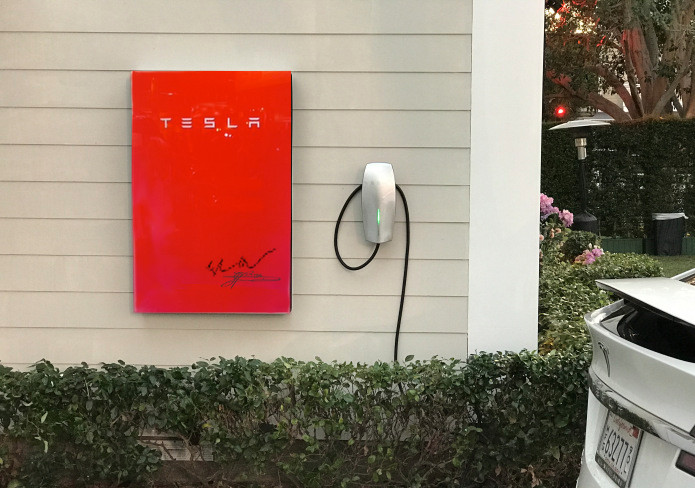
Artists rendition of a Red Founders Series Tesla Powerwall 2.0 hand signed by Elon Musk
Powerwall uses an internal inverter to convert DC energy to the AC energy required for a home or small business. A liquid thermal control system regulates Powerwall’s internal temperature to maximize battery performance in any climate. The most affordable home battery in terms of cost per kWh, the company argues that the Powerwall economically meets the daily energy needs of most homes. With usable capacity of 13.5 kWh, the Powerwall system has a 100% depth of discharge and 7kW peak / 5kW continuous power. Floor or wall mounted, indoor or outdoor, the Powerwall has a ten year warranty and is scalable up to nine Powerwalls. Its operating temperature ranges from -4° to 122°F / -20°C to 50°C. The system is certified to meet North American and international standards.
One 14 kWh Powerwall battery costs $5,500, with installation and supporting hardware adding $1,500, or a total estimate $7,000. U.S. installations are beginning in February, 2017, according to company data.
There’s no doubt Elon Musk sees solar as the future for electricity generation, just as he views electric cars as the future of transportation. “The primary means of energy generation is going to solar,” he said in 2015 prior to the merger with SolarCity, in which the issue of utility-based versus independent energy generation still seemed futuristic. “It will at least be a plurality, and probably be a slight majority in the long term.”
The forecast for solar in the U.K. and U.S.
The London-based Powervault company is targeting sales of 50,000 units a year by 2020, up from about 1,000 this year. Powervault is entering the home storage market just as Tesla is readying its Nevada-based Gigafactory for Model 3 production. Musk expects the plant will double the global production of lithium-ion batteries next year, so that, by 2018, the Gigafactory will reach full capacity and produce more lithium ion batteries annually than were produced worldwide in 2013.
Solar PV deployment at the consumer level alongside battery storage is putting pressure on network operators and the way national electricity systems are traditionally managed and governed. This is brought about by new developments in electricity storage, electric, vehicles and smart appliances. Solar PV already accounts for about 2% of global electricity in 2016, but could reach as much as 13% by 2030. In order for this to happen, solar PV capacity additions must double in 14 years, with Tesla leading the way and companies like Powervault joining the march.
Interested in solar? Get a solar cost estimate and find out how much a solar system would cost for your home or business.
Elon Musk
Tesla Energy shines with substantial YoY growth in deployments
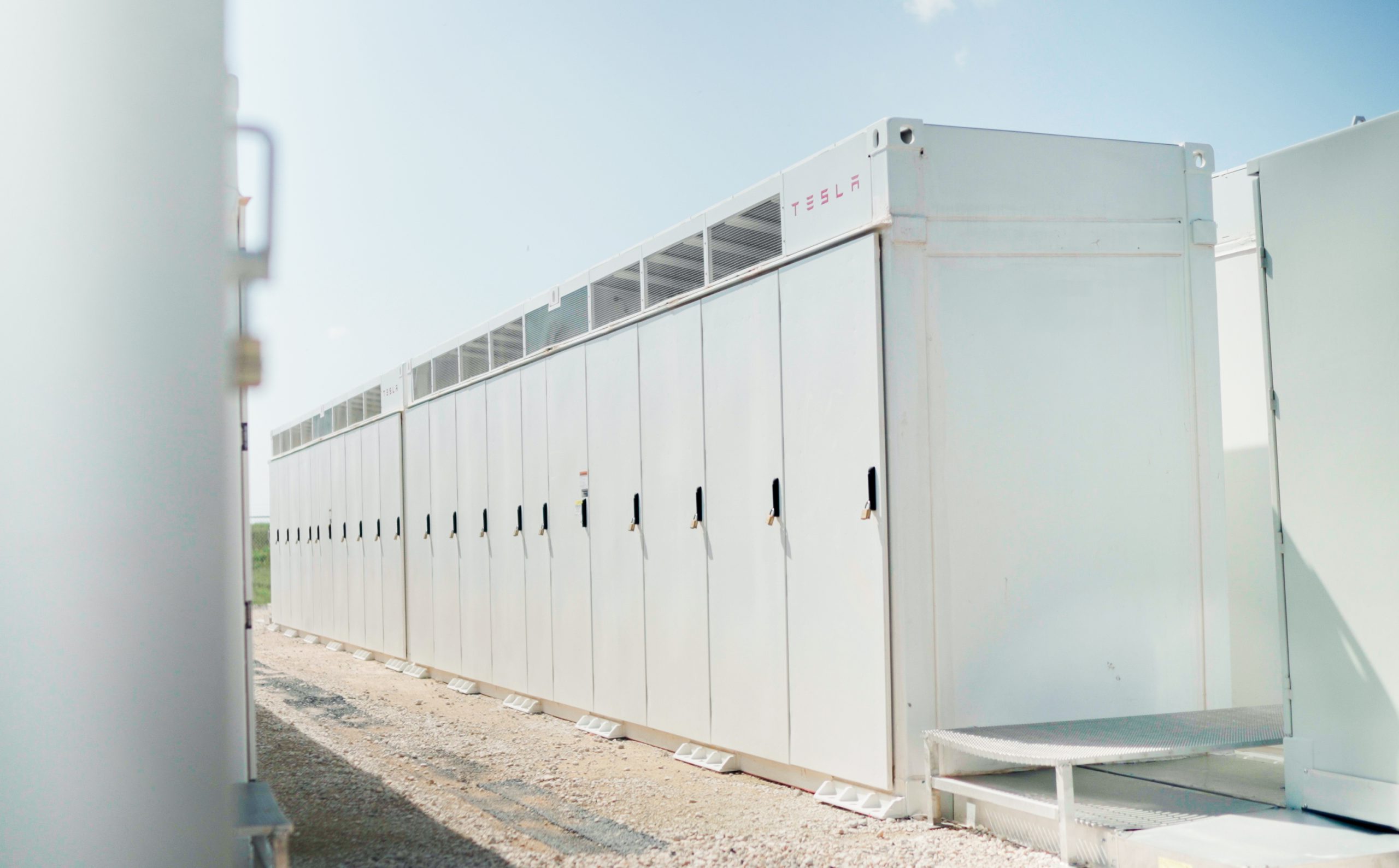
Tesla Energy shined in what was a weak delivery report for the first quarter, as the company’s frequently-forgotten battery storage products performed extraordinarily well.
Tesla reported its Q1 production, delivery, and deployment figures for the first quarter of the year, and while many were less-than-excited about the automotive side, the Energy division performed well with 10.4 GWh of energy storage products deployed during the first quarter.
This was a 156 percent increase year-over-year and the company’s second-best quarter in terms of energy deployments to date. Only Q4 2024 was better, as 11 GWh was recorded.
Tesla Energy is frequently forgotten and not talked about enough. The company has continued to deploy massive energy storage projects across the globe, and as it recorded 31.5 GWh of deployments last year, 2025 is already looking as if it will be a record-setting year if it continues at this pace.
Tesla Megapacks to back one of Europe’s largest energy storage sites
Although Energy performed well, many investors are privy to that of the automotive division’s performance, which is where some concern lies. Tesla had a weak quarter for deliveries, missing Wall Street estimates by a considerable margin.
There are two very likely reasons as to why this happened: the first is Tesla’s switchover to the new Model Y at its production facilities across the globe. Tesla said it lost “several weeks” of production due to the updating of manufacturing lines as it rolled out a new version of its all-electric crossover.
Secondly, Tesla could be facing some pressure from pushback against the brand, which is what many analysts will say. Despite the publicity of attacks on Tesla drivers and their vehicles, as well as the company’s showrooms, it would be safe to assume that we will have a better picture painted of what the issue is in Q2 after the company reports numbers in July.
If Tesla is still struggling with lackluster delivery figures in Q2 after the Model Y is ramped and deliveries are more predictable and consistent, we could see where the argument for brand damage is legitimate. However, we are more prone to believe the Model Y, which accounts for most of Tesla’s sales, and its production ramp is likely the cause for what happened in Q1.
In what was a relatively bleak quarter, Tesla Energy still shines as the bright spot for the quarter.
Energy
Tesla lands in Texas for latest Megapack production facility
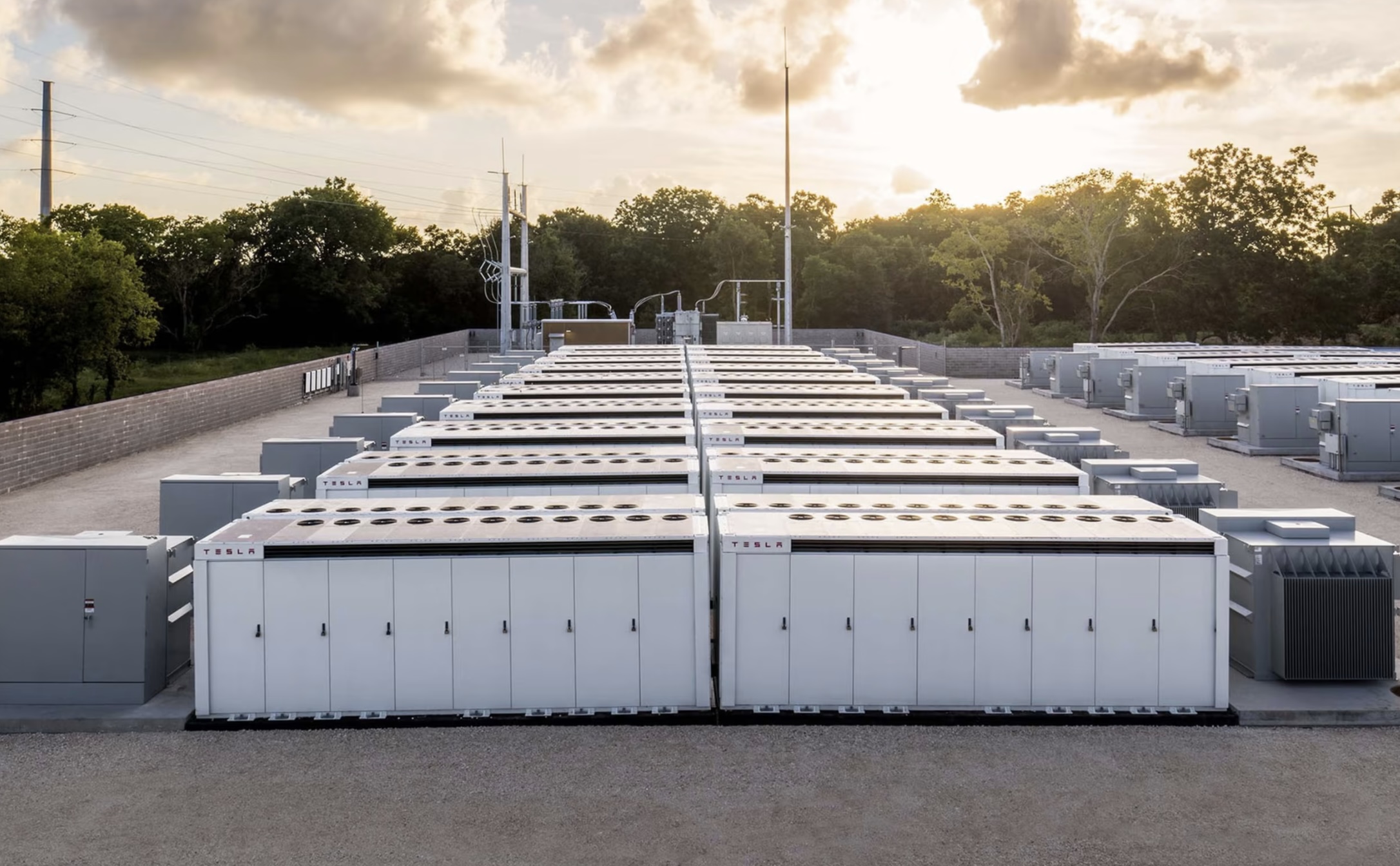
Tesla has chosen the location of its latest manufacturing project, a facility that will churn out the Megapack, a large-scale energy storage system for solar energy projects. It has chosen Waller County, Texas, as the location of the new plant, according to a Commissioners Court meeting that occurred on Wednesday, March 5.
Around midday, members of the Waller County Commissioners Court approved a tax abatement agreement that will bring Tesla to its area, along with an estimated 1,500 jobs. The plant will be located at the Empire West Industrial Park in the Brookshire part of town.
Brookshire also plans to consider a tax abatement for Tesla at its meeting next Thursday.
The project will see a one million square-foot building make way for Tesla to build Megapack battery storage units, according to Covering Katy News, which first reported on the company’s intention to build a plant for its energy product.
CEO Elon Musk confirmed on the company’s Q4 2024 Earnings Call in late January that it had officially started building its third Megapack plant, but did not disclose any location:
“So, we have our second factory, which is in Shanghai, that’s starting operation, and we’re building a third factory. So, we’re trying to ramp output of the stationary battery storage as quickly as possible.”
Tesla plans third Megafactory after breaking energy records in 2024
The Megapack has been a high-demand item as more energy storage projects have started developing. Across the globe, regions are looking for ways to avert the loss of power in the event of a natural disaster or simple power outage.
This is where Megapack comes in, as it stores energy and keeps the lights on when the main grid is unable to provide electricity.
Vince Yokom of the Waller County Economic Development Partnership, commented on Tesla’s planned Megapack facility:
“I want to thank Tesla for investing in Waller County and Brookshire. This will be a state-of-the-art manufacturing facility for their Megapack product. It is a powerful battery unit that provides energy storage and support to help stabilize the grid and prevent outages.”
Tesla has had a lease on the building where it will manufacture the Megapacks since October 2021. However, it was occupied by a third-party logistics company that handled the company’s car parts.
Energy
Tesla Energy had a blockbuster 2024

Tesla Energy has become the undisputed dark horse of the electric vehicle maker. This was highlighted by Tesla Energy’s growing role in the company’s overall operations in the past quarters.
And as per Tesla’s year-end milestone posts on X, Tesla Energy had a blockbuster 2024.
Tesla Energy’s 2024 milestones:
- As per Tesla on its official social media account on X, the company has hit over 800,000 Powerwalls installed worldwide.
- From this number, over 100,000 Powerwall batteries have been enrolled in virtual power plant (VPP) programs.
- The Powerwall 3 has officially been launched in the United States, Canada, Puerto Rico, the U.K., Germany, Italy, Australia, and New Zealand.
- The Tesla Megapack hit over 22 GWh in operation across more than 60 countries across the globe.
- The Lathrop Megafactory, which produces the Megapack, has been ramped to 40 GWh per year.
- The Lathrop Megafactory has also produced its 10,000th Megapack battery.
- The Shanghai Megafactory was completed in just seven months, and it is ready to start Megapack production in Q1 2025.
Hit 800k Powerwalls installed worldwide
— Tesla (@Tesla) December 31, 2024
Also:
– Over 100k Powerwalls are now enrolled in VPP programs
– Launched Powerwall 3 in the US, Canada, Puerto Rico, UK, Germany, Italy, Australia & New Zealand
– Megapack hit 22+ GWh in operation across 60+ countries
– Ramped… pic.twitter.com/bE88DpeyTg
Powerwall owners’ 2024 impact:
- As per Tesla Energy, Powerwall owners generated a total of 4.5 TWh of solar energy globally in 2024. This was equivalent to powering a Model 3 for more than 17 billion miles.
- A total of 1.1 TWh of energy was stored in Powerwalls in 2024. This protected homes from over 5.8 million outages during the year.
- Tesla’s Storm Watch feature for Powerwall batteries covered 2.8 million severe weather events over the year.
- Powerwall owners saw collective savings of over $800 million on utility bills.
- Virtual Power Plants contributed over 2.2 GWh of power to the grid. This reduced the need for 2,200 metric tons of fossil fuel peaker plant emissions.
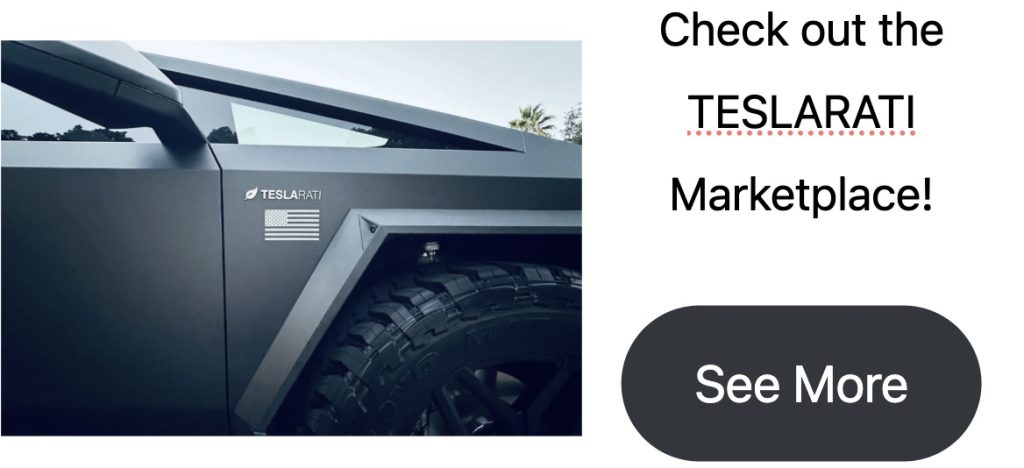
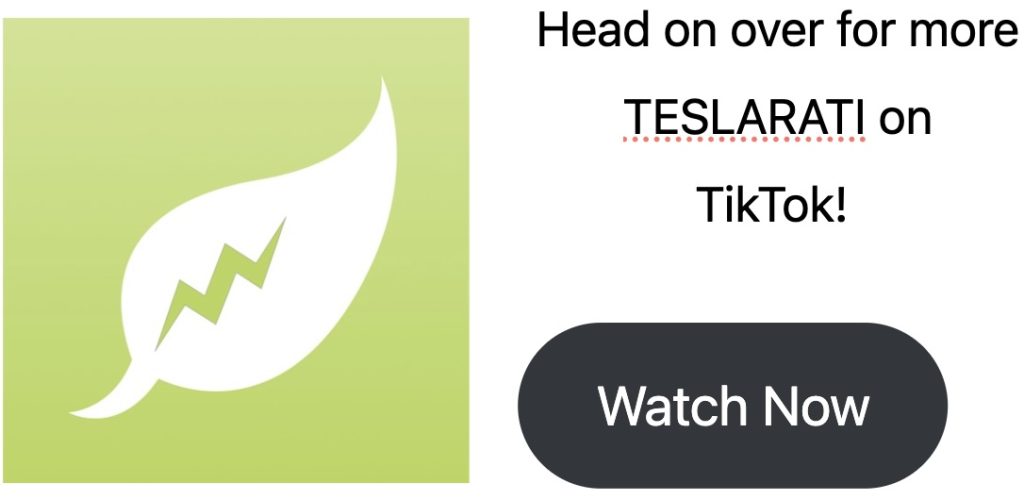
Don’t hesitate to contact us with news tips. Just send a message to simon@teslarati.com to give us a heads up.
-
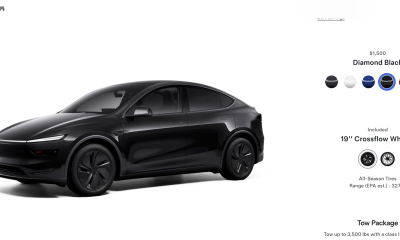
 News1 week ago
News1 week agoTesla rolls out new, more affordable trim of the Model Y Juniper in U.S.
-
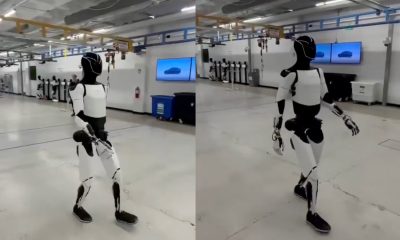
 News1 week ago
News1 week agoTesla shares Optimus’ improved walk in new update video
-

 News2 weeks ago
News2 weeks agoTesla US Gigafactories shields from Trump’s 25% Tariffs
-
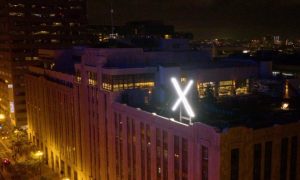
 Elon Musk2 weeks ago
Elon Musk2 weeks agoMusk says xAI has acquired X in $33 billion stock deal
-

 Elon Musk1 week ago
Elon Musk1 week agoTesla Germany reports 4,935 units sold in Q1 2025
-
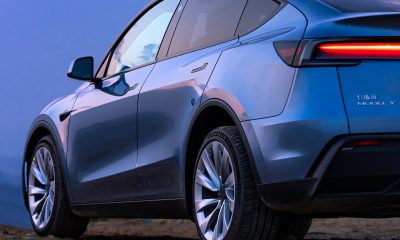
 Investor's Corner2 weeks ago
Investor's Corner2 weeks agoTesla (TSLA) shares company-compiled Q1 2025 delivery consensus
-
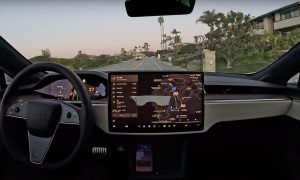
 News7 days ago
News7 days agoTesla expands Early Access Program (EAP) for early Full Self-Driving testing
-

 Elon Musk1 week ago
Elon Musk1 week agoNYC Comptroller moves to sue Tesla for securities violations


